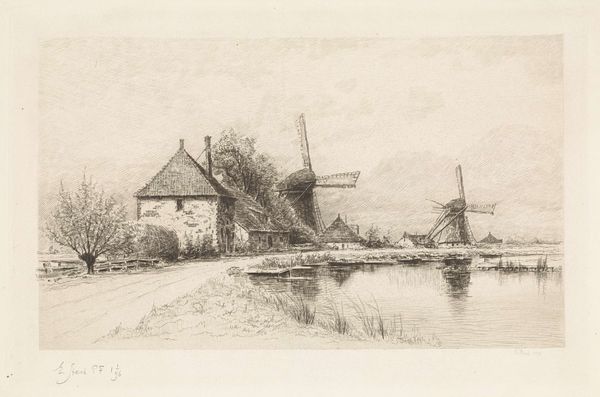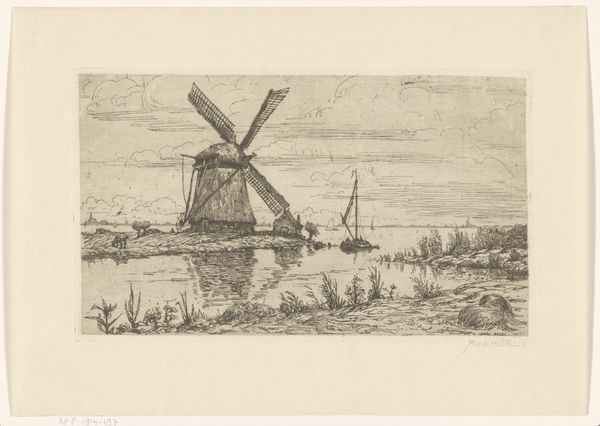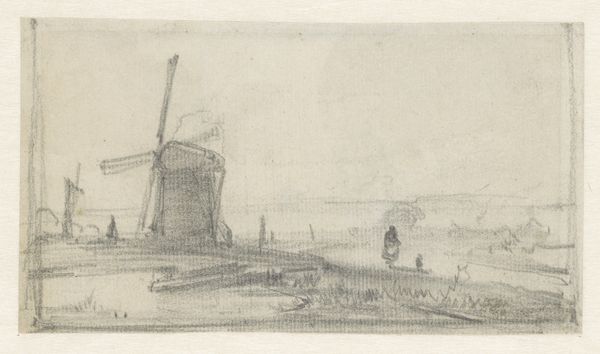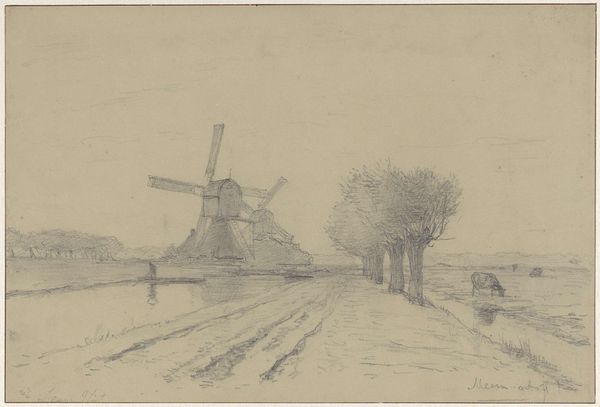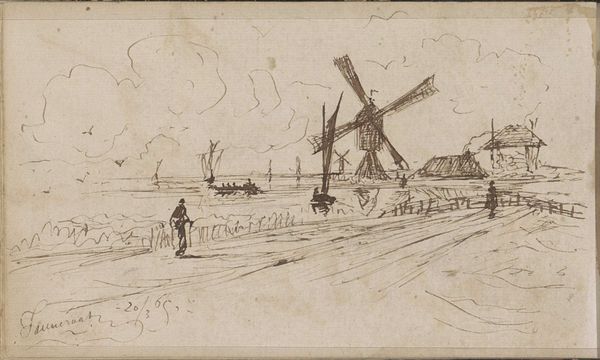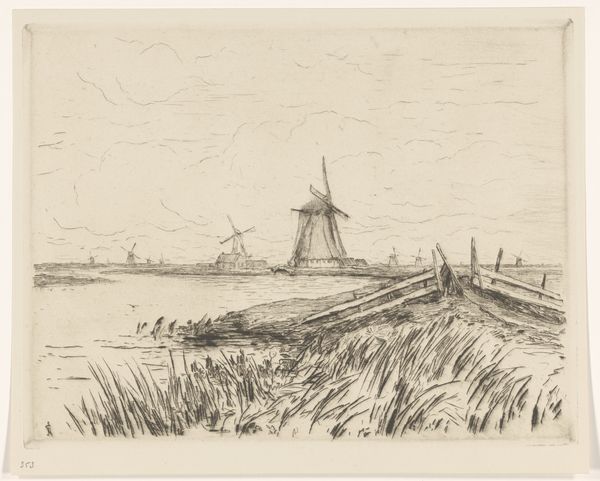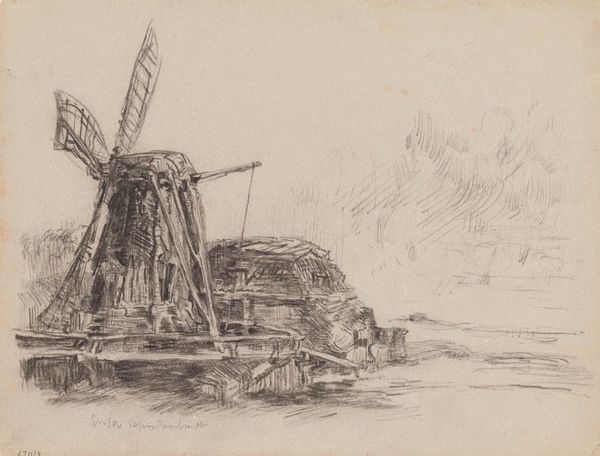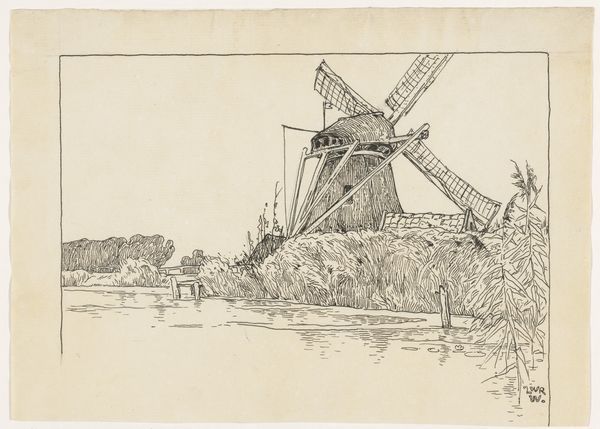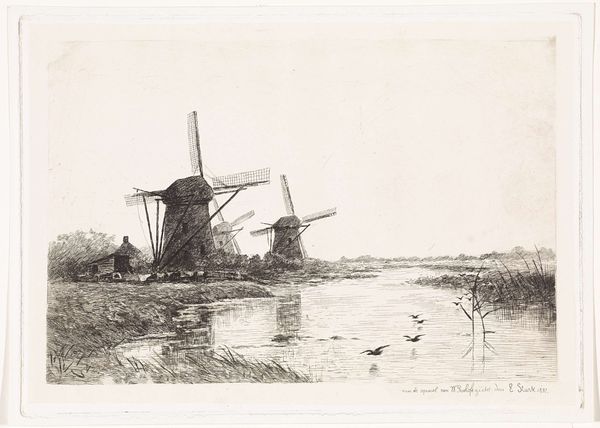
drawing, pencil
#
drawing
#
dutch-golden-age
#
pen sketch
#
pencil sketch
#
landscape
#
pencil
#
realism
Dimensions: height 97 mm, width 171 mm
Copyright: Rijks Museum: Open Domain
Editor: This drawing, titled "Landschap met rivier en twee molens," or "Landscape with River and Two Mills," is by Egbert Rubertus Derk Schaap, created sometime between 1872 and 1939. It's rendered in pencil, a delicate little sketch really. What strikes me most is its understated quality. It feels like a fleeting observation captured in a brief moment. How do you interpret its connection to Dutch landscape art of that time? Curator: This piece, although seemingly simple, connects deeply to the broader socio-political context of landscape art in the Netherlands, especially considering its probable timeframe. Windmills, of course, were integral to the Dutch economy, representing industry and control over the environment. The serene landscape masks a more profound commentary on Dutch identity and the ongoing negotiation between nature and human intervention. Don't you find the sketch-like quality almost democratic in its accessibility? Editor: Democratic in what way? Curator: In that the quick sketch style departs from the highly finished, polished landscapes favored by earlier generations of Dutch masters. It hints at a shift in art's accessibility to a wider audience, mirroring social changes happening at the time. It becomes less about showcasing wealth and more about capturing everyday scenes. Consider how museums started opening to the public during this period; did that shape this art movement, too? Editor: That’s interesting. I hadn’t considered the relationship between art’s democratisation and the sketch aesthetic. It does make me think about how artistic techniques can be reflective of broader social trends and institutional change. Curator: Exactly. The rise of public art institutions influenced what and how artists created. This piece really speaks to that shift in the cultural landscape. Editor: I'll certainly view such "fleeting observation" with broader historical factors in mind. Thank you.
Comments
No comments
Be the first to comment and join the conversation on the ultimate creative platform.
